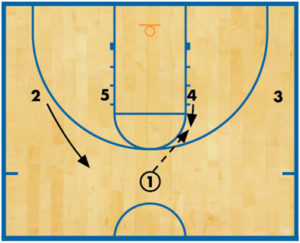Preparing for end-of-game situations
Nothing is more agonizing for a coach than to see a lead disappear and have what seemed like certain victory turn into a gut wrenching defeat in the final minutes of a game. How many times has your team had an opportunity to win a game in the final seconds only to fail to take advantage of the situation with poor execution or mistakes?
 When this happens to my team, it always means a late night for me. I stay awake and replay the game’s final few moments, trying to relive the scenario and figure out what I could have done to better prepare my players for end-of-game situations.
When this happens to my team, it always means a late night for me. I stay awake and replay the game’s final few moments, trying to relive the scenario and figure out what I could have done to better prepare my players for end-of-game situations.
After a good deal of studying, reading and talking to other coaches regarding end-of-game situations, these are the ideas we have decided are most important.
Seven tips to prepare
1. There’s no substitute for being properly conditioned. If your team isn’t in “game shape,” it can’t properly execute the fundamentals of your offensive and defensive schemes. While I am not big a proponent of taking up too much practice time running without a ball, it’s important to make sure that your offensive and defensive drills make practice physically demanding and tougher than the games.
2. Fundamentals are critical at the end of the game. Proper execution of the “little things” is critical in late-game situations. Your passes must be crisp, and your receivers must step to the ball. Proper screens are crucial to getting open, and your post players must work hard to hold their seals against aggressive defenders. Making fundamentals a priority in your practice sessions pays huge dividends in late-game situations.
3. Your players will perform better in situations they have seen before. Try to practice end-of-game situations at the end of each practice. A great way to practice special situations is to use index cards and list all the possible situations you can think of and go through a couple of these cards at the end of each practice. The more familiar your players are with what they are supposed to do, the more likely they are to do it well and not become rattled during the intense pressure of an end-of-the-game situation.
4. Teach players to recognize the situation and predict how opponents will respond. Using index cards and being prepared for these types of situations helps your players understand how to use this knowledge to make the correct decisions to take advantage of your opponent.
5. Finishing plays with contact and free-throw shooting decides the outcome of many close games. Most coaches realize that officials are more hesitant to make calls when the game is on the line. Therefore, it becomes imperative that your players learn to finish plays when they are bumped or fouled hard.
We spend time in every practice bumping our players with blocking pads while they shoot layups and short jumpers to familiarize them with the fact that they have to make shots when they get hit. We teach them to concentrate on finishing the play with contact instead of looking to be bailed out by an official with a foul call.
6. Don’t neglect your free-throw time. While it seems to be cliché to talk about the importance of free-throw shooting at the end of the game, we all know it is true. If your team shoots poor from the line during clutch situations, you probably aren’t going to fair well in close games.
With limited practice time, it may be tempting to shorten your free-throw shooting time during practices. Our team learned the lesson the hard way by losing a few close games because of poor foul shooting. We have now decided to always find the time to work on free-throw shooting during practices — no exceptions.
7. Know your personnel and how they’ll react under pressure. Every team possesses players who handle end-of-game situations better than others. Some players want the ball, keep their cool, and never lose their focus. Others shy away from the ball, become easily rattled, and are more likely to miss a clutch free throw or make a turnover during a high-pressure situation.
It is the coach’s job to closely evaluate players during practices and early-season games and recognize those players who are best suited for the tense situations of a close game. Coaches need to learn when to get those players into the game, and to take advantage of their cool demeanor and positive abilities under pressure. Doing so minimizes the weaknesses of your team, and it keeps your most level-headed players on the floor during crunch time.












